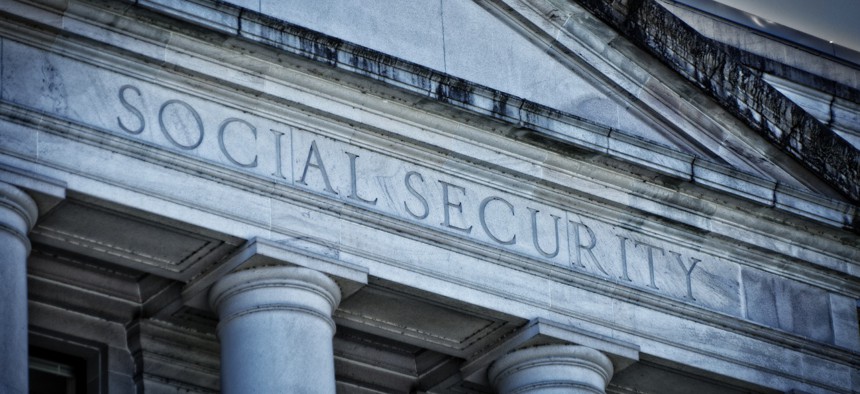
YinYang - istock
Democrats, Employee Groups Rally Around Social Security Reform Bill
Legislation with nearly 200 sponsors would change how annual cost of living adjustments are calculated, temporarily eliminate the controversial Windfall Elimination Provision, and restrict the agency’s ability to close field offices.
Federal employee groups this week became the latest to embrace legislation from House Democrats aimed at reforming Social Security, which has a number of implications for federal retirees and Social Security Administration employees.
Social Security 2100: A Sacred Trust (H.R. 5723), introduced by Rep. John Larson, D-Conn., and cosponsored by 196 other Democrats, would revamp how benefits are calculated for retirees—including former federal employees—as well as make it harder for the agency to reduce the number of field and hearing offices across the country.
On the benefits side, the bill would provide an average 2% increase in Social Security benefits for retirees, equivalent to around $30 per month. It also would change the metric used to calculate annual cost of living adjustments from the consumer price index for workers (CPI-W) to the consumer price index for the elderly (CPI-E), which advocates say is a more accurate reflection in the changing cost of living that retirees experience on an annual basis. President Biden endorsed that proposal on the campaign trail last year.
Additionally, the bill temporarily scraps two Social Security provisions that have been a sore subject for federal, state and local government employees for years: the Government Pension Offset and the Windfall Elimination Provision. The bill would eliminate both provisions from 2022 through 2026.
The GPO cuts the Social Security survivor benefits of spouses, widows and widowers with a public pension—including federal employees covered by the Civil Service Retirement System—by two-thirds. The Windfall Elimination Provision cuts Social Security retirement benefits—unfairly, in the eyes of public sector retirees—in instances where a former federal, state or local employee spent a portion of their career in the private sector. The Windfall Elimination Provision primarily affects federal retirees enrolled in CSRS.
On the operations side, the bill would bar the Social Security Administration from reducing the total number of field offices below the level in operation at the end of fiscal 2021, and requires the agency to meet a series of criteria to move forward with any field office closures. In order to close a field office, Social Security officials would have to provide advance public notice, a chance for public comment on the plan, as well as “a robust consideration” of the burdens closing a field office would have on the community it serves.
American Federation of Government Employees Director of Legislation Julie Tippens wrote in a letter to lawmakers that the bill’s changes to benefits calculations are a much-needed update to the law.
“This legislation will strengthen Social Security benefits by increasing the across-the-board benefit to seniors, more accurately calculating the cost of living adjustment to make up for inadequate benefits since 1983, [and by] increasing the minimum benefit for lifetime low earners based on years in the workforce,” she wrote. “[This] bill is a critical first step in repealing the Windfall Elimination Provision and Government Pension Offset for Social Security to provide workers, including many federal employees, a fairer Social Security benefit. Federal employees under the Civil Service Retirement System did not contribute to Social Security for those earnings, but often have sufficient non-federal earnings and they are getting short changed.”
Ken Thomas, national president of the National Active and Retired Federal Employees Association, applauded the inclusion of proposed changes to cost-of-living adjustments.
“CPI-E better accounts for seniors’ spending habits, notably that of health care,” he wrote. “Simply, seniors spend more on health care—while health care accounts for about 8% of spending for the general population, it accounts for 12% of spending for those age 62 and older. Meanwhile, health care costs have risen faster than the cost of other goods.”
NEXT STORY: TSP Tips for Those About to Retire







